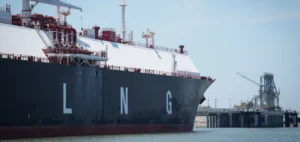Eni announces the launch of its second floating liquefied natural gas (FLNG) facility offshore the Republic of Congo by the end of 2025.
The announcement follows a meeting between CEO Claudio Descalzi and President Denis Sassou Nguesso on July 20. Eni’s first FLNG facility, Tango, begins exports in February 2023 with an annual capacity of one billion cubic meters (Bcm).
The project aims to transform the country into a natural gas exporter.
The new facility will increase Congo’s total export capacity to 4.5 Bcm per year, consolidating the country’s position among the world’s LNG exporters.
Strategic investments in global energy
Descalzi briefs the President on the progress of the Congo LNG project, which begins exports in February, twelve months after its approval.
The project contributes to the global energy market and strengthens Congo’s position as an LNG exporter.
The second phase of the project, scheduled to start at the end of 2025, will increase gas exports to 4.5 Bcm per year.
All LNG production, based on reserves from the Marine XII block, will be marketed by Eni.
A strategy focused on Europe
In April last year, Eni declared that the Congo LNG project would supply new gas volumes to international markets, focusing on Europe.
Descalzi emphasizes that the project will contribute to Italy’s and Europe’s energy security and industrial competitiveness.
Italy has historically depended on Russian gas imports, covering up to 40% of its needs.
However, these imports will fall in 2022 following Russia’s invasion of Ukraine.
Eni is stepping up the development of LNG exports from the Republic of Congo to find alternatives to Russian gas.
Promising prospects despite high prices
Spot prices for LNG delivered to Southern Europe remain high, above $10/MMBtu.
On July 19, Platts valued the DES LNG Mediterranean marker at $10.41/MMBtu.
Eni claims that LNG exports will monetize surplus gas production.
To date, three cargoes have been loaded at the Tango plant, destined for Italy and Spain.
Increasing Congo’s LNG export capacity is a strategic step for Eni.
It reinforces the diversification of energy sources for Europe, reducing dependence on Russian gas.
The outlook for high LNG prices points to sustained demand, making these investments essential for regional energy security.






















